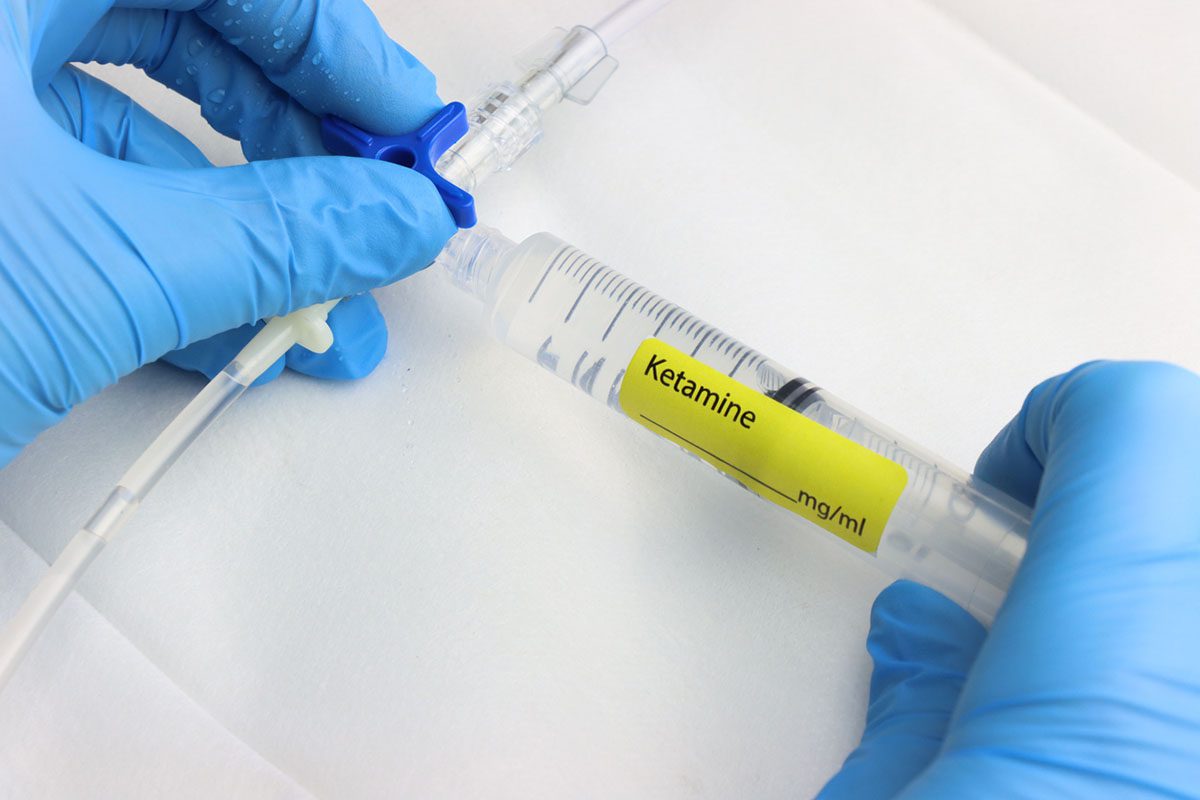ABSTRACT
Objective: Impaired daily functioning and psychiatric symptoms are highly prevalent in obstructive sleep apnea (OSA); however, the effects of weight loss and lifestyle interventions on these symptoms remain uncertain. This study aimed to evaluate the efficacy of an interdisciplinary weight loss and lifestyle intervention on impaired functioning, psychological distress, anxiety, and depression among men with moderate-to-severe OSA and obesity.
Methods: This study was a randomized clinical trial conducted from April 2019 to October 2020. Men aged 18–65 years with moderate-to-severe OSA and obesity were randomly assigned to usual care (continuous positive airway pressure) or an 8-week weight loss and lifestyle intervention. Primary outcomes were changes from baseline to intervention endpoint and 6 months after intervention in daily functioning (measured by the Functional Outcomes of Sleep Questionnaire [FOSQ]); psychological distress (evaluated through the General Health Questionnaire [GHQ]); and anxiety and depression symptoms (measured by the State-Trait Anxiety Inventory [STAI], State-Trait Depression Inventory [STDI], and Beck Depression Inventory [BDI]).
Results: Eighty-nine participants underwent randomization (mean [± SD] age, 54 ± 8 years; mean apnea-hypopnea index, 41 ± 22 events/h); 49 were assigned to usual care and 40 to the intervention. As compared with usual care, the intervention group had greater improvements in daily functioning (mean between-group difference in FOSQ score, 2.3; 95% confidence interval, 1.5 to 3.2), psychological distress (GHQ score, −10.3; −15.3 to −5.1), state anxiety (STAI-State score, −7.0; −11.0 to −3.0), trait anxiety (STAI-Trait score, −6.1; −9.5 to −2.8), state depression (STDI-State score, −2.4; −4.3 to −0.4), trait depression (STDI-Trait score, −3.8; −5.6 to −2.1), and general depression (BDI score, −2.0; −3.2 to −0.8) at intervention endpoint. Similar changes were observed at 6 months after intervention.
Conclusions: This study provides the first evidence suggesting that an interdisciplinary weight loss and lifestyle intervention improves OSA-related impaired daily functioning and psychiatric symptoms. These findings should be considered when evaluating the potential benefits of this behavioral approach for OSA.
Trial Registration: ClinicalTrials.gov Identifier: NCT03851653
J Clin Psychiatry 2023;84(4):22m14502
Author affiliations are listed at the end of this article.
Continue Reading...
Did you know members enjoy unlimited free PDF downloads as part of their subscription? Subscribe today for instant access to this article and our entire library in your preferred format. Alternatively, you can purchase the PDF of this article individually.
References (54)

- Gottlieb DJ, Punjabi NM. Diagnosis and management of obstructive sleep apnea: a review. JAMA. 2020;323(14):1389–1400. PubMed CrossRef
- Senaratna CV, Perret JL, Lodge CJ, et al. Prevalence of obstructive sleep apnea in the general population: a systematic review. Sleep Med Rev. 2017;34:70–81. PubMed CrossRef
- Lavie L. Oxidative stress in obstructive sleep apnea and intermittent hypoxia–revisited–the bad ugly and good: implications to the heart and brain. Sleep Med Rev. 2015;20:27–45. PubMed CrossRef
- Aurora RN, Punjabi NM. Obstructive sleep apnoea and type 2 diabetes mellitus: a bidirectional association. Lancet Respir Med. 2013;1(4):329–338. PubMed CrossRef
- Peppard PE, Young T, Palta M, et al. Prospective study of the association between sleep-disordered breathing and hypertension. N Engl J Med. 2000;342(19):1378–1384. PubMed CrossRef
- Marin JM, Carrizo SJ, Vicente E, et al. Long-term cardiovascular outcomes in men with obstructive sleep apnoea-hypopnoea with or without treatment with continuous positive airway pressure: an observational study. Lancet. 2005;365(9464):1046–1053. PubMed CrossRef
- Kim JY, Ko I, Kim DK. Association of obstructive sleep apnea with the risk of affective disorders. JAMA Otolaryngol Head Neck Surg. 2019;145(11):1020–1026. PubMed CrossRef
- Peppard PE, Szklo-Coxe M, Hla KM, et al. Longitudinal association of sleep-related breathing disorder and depression. Arch Intern Med. 2006;166(16):1709–1715. PubMed CrossRef
- Harris M, Glozier N, Ratnavadivel R, et al. Obstructive sleep apnea and depression. Sleep Med Rev. 2009;13(6):437–444. PubMed CrossRef
- Young T, Finn L, Peppard PE, et al. Sleep disordered breathing and mortality: eighteen-year follow-up of the Wisconsin sleep cohort. Sleep. 2008;31(8):1071–1078. PubMed
- Katon W, Lin EH, Kroenke K. The association of depression and anxiety with medical symptom burden in patients with chronic medical illness. Gen Hosp Psychiatry. 2007;29(2):147–155. PubMed CrossRef
- Basner RC. Continuous positive airway pressure for obstructive sleep apnea. N Engl J Med. 2007;356(17):1751–1758. PubMed CrossRef
- Gupta MA, Simpson FC, Lyons DC. The effect of treating obstructive sleep apnea with positive airway pressure on depression and other subjective symptoms: A systematic review and meta-analysis. Sleep Med Rev. 2016;28:55–68. PubMed CrossRef
- Carneiro-Barrera A, Amaro-Gahete FJ, Sáez-Roca G, et al. Anxiety and depression in patients with obstructive sleep apnoea before and after continuous positive airway pressure: the ADIPOSA study. J Clin Med. 2019;8(12):2099. PubMed CrossRef
- Vanek J, Prasko J, Genzor S, et al. Obstructive sleep apnea, depression and cognitive impairment. Sleep Med. 2020;72:50–58. PubMed CrossRef
- Haensel A, Norman D, Natarajan L, et al. Effect of a 2 week CPAP treatment on mood states in patients with obstructive sleep apnea: a double-blind trial. Sleep Breath. 2007;11(4):239–244. PubMed CrossRef
- Feng Y, Zhang Z, Dong ZZ. Effects of continuous positive airway pressure therapy on glycaemic control, insulin sensitivity and body mass index in patients with obstructive sleep apnoea and type 2 diabetes: a systematic review and meta-analysis. NPJ Prim Care Respir Med. 2015;25(1):15005. PubMed CrossRef
- Epstein LJ, Kristo D, Strollo PJ Jr, et al; Adult Obstructive Sleep Apnea Task Force of the American Academy of Sleep Medicine. Clinical guideline for the evaluation, management and long-term care of obstructive sleep apnea in adults. J Clin Sleep Med. 2009;5(3):263–276. PubMed CrossRef
- Hudgel DW, Patel SR, Ahasic AM, et al; American Thoracic Society Assembly on Sleep and Respiratory Neurobiology. The role of weight management in the treatment of adult obstructive sleep apnea: an official American Thoracic Society clinical practice guideline. Am J Respir Crit Care Med. 2018;198(6):e70–e87. PubMed CrossRef
- Carneiro-Barrera A, Díaz-Román A, Guillén-Riquelme A, et al. Weight loss and lifestyle interventions for obstructive sleep apnoea in adults: Systematic review and meta-analysis. Obes Rev. 2019;20(5):750–762. PubMed CrossRef
- Carneiro-Barrera A, Amaro-Gahete FJ, Guillén-Riquelme A, et al. Effect of an interdisciplinary weight loss and lifestyle intervention on obstructive sleep apnea severity: The INTERAPNEA randomized clinical trial. JAMA Netw Open. 2022;5(4):e228212. PubMed CrossRef
- Foster GD, Borradaile KE, Sanders MH, et al; Sleep AHEAD Research Group of Look AHEAD Research Group. A randomized study on the effect of weight loss on obstructive sleep apnea among obese patients with type 2 diabetes: the Sleep AHEAD study. Arch Intern Med. 2009;169(17):1619–1626. PubMed CrossRef
- Johansson K, Neovius M, Lagerros YT, et al. Effect of a very low energy diet on moderate and severe obstructive sleep apnoea in obese men: a randomised controlled trial. BMJ. 2009;339:b4609. PubMed CrossRef
- Tuomilehto H, Seppä J, Uusitupa M, et al. Kuopio Sleep Apnea Group. Weight reduction and increased physical activity to prevent the progression of obstructive sleep apnea: a 4-Year observational postintervention follow-up of a randomized clinical trial. JAMA Intern Med. 2013;173(10):930–932. PubMed CrossRef
- Sampson M, Clark A, Bachmann M, et al; Norfolk Diabetes Prevention Study (NDPS) Group. Lifestyle intervention with or without lay volunteers to prevent type 2 diabetes in people with impaired fasting glucose and/or nondiabetic hyperglycemia: a randomized clinical trial. JAMA Intern Med. 2021;181(2):168–178. PubMed CrossRef
- Rubin RR, Wadden TA, Bahnson JL, et al; Look AHEAD Research Group. Impact of intensive lifestyle intervention on depression and health-related quality of life in type 2 diabetes: the Look AHEAD Trial. Diabetes Care. 2014;37(6):1544–1553. PubMed CrossRef
- Faulconbridge LF, Wadden TA, Rubin RR, et al; Look AHEAD Research Group. One-year changes in symptoms of depression and weight in overweight/obese individuals with type 2 diabetes in the Look AHEAD study. Obesity (Silver Spring). 2012;20(4):783–793. PubMed CrossRef
- Goyer L, Dufour R, Janelle C, et al. Randomized controlled trial on the long-term efficacy of a multifaceted, interdisciplinary lifestyle intervention in reducing cardiovascular risk and improving lifestyle in patients at risk of cardiovascular disease. J Behav Med. 2013;36(2):212–224. PubMed CrossRef
- Carneiro-Barrera A, Amaro-Gahete FJ, Díaz-Román A, et al. Interdisciplinary weight loss and lifestyle intervention for obstructive sleep apnoea in adults: rationale, design and methodology of the INTERAPNEA study. Nutrients. 2019;11(9):2227. PubMed CrossRef
- Johns MW. A new method for measuring daytime sleepiness: the Epworth sleepiness scale. Sleep. 1991;14(6):540–545. PubMed CrossRef
- Buysse DJ, Reynolds CF 3rd, Monk TH, et al. The Pittsburgh Sleep Quality Index: a new instrument for psychiatric practice and research. Psychiatry Res. 1989;28(2):193–213. PubMed CrossRef
- Schulz KF, Grimes DA. Generation of allocation sequences in randomised trials: chance, not choice. Lancet. 2002;359(9305):515–519. PubMed CrossRef
- Weaver TE, Laizner AM, Evans LK, et al. An instrument to measure functional status outcomes for disorders of excessive sleepiness. Sleep. 1997;20(10):835–843. PubMed
- Ferrer M, Vilagut G, Monasterio C, et al. Medida del impacto de los trastornos del sueño: las versiones españolas del cuestionario del impacto funcional del sueño y de la escala de somnolencia de Epworth. (Measurement of the perceived impact of sleep problems: the Spanish version of the functional outcomes sleep questionnaire and the Epworth Sleepiness Scale). Med Clin (Barc). 1999;113(7):250–255. PubMed
- Gooneratne NS, Weaver TE, Cater JR, et al. Functional outcomes of excessive daytime sleepiness in older adults. J Am Geriatr Soc. 2003;51(5):642–649. PubMed CrossRef
- Drummond F, Doelken P, Ahmed QA, et al. Empiric auto-titrating CPAP in people with suspected obstructive sleep apnea. J Clin Sleep Med. 2010;6(2):140–145. PubMed CrossRef
- Goldberg DP, Hillier VF. A scaled version of the General Health Questionnaire. Psychol Med. 1979;9(1):139–145. PubMed CrossRef
- Lobo A, Pérez-Echeverría MJ, Artal J. Validity of the scaled version of the General Health Questionnaire (GHQ-28) in a Spanish population. Psychol Med. 1986;16(1):135–140. PubMed CrossRef
- Spielberger CD, Gorsuch R, Lushene R, eds. Manual for the State-Trait Anxiety Inventory. Consulting Psychologist Press; 1970.
- Spielberger CD, Gorsuch RL, Lushene TE. State-Trait Anxiety Inventory. TEA Ediciones; 1994.
- Buela-Casal G, Guillén-Riquelme A, Seisdedos-Cubero N. Cuestionario de Ansiedad Estado-Rasgo: Adaptación Española. 9th ed. TEA Ediciones; 2016.
- Spielberger CD, Agudelo D, Buela-Casal G. Inventario de Depresión Estado/Rasgo (IDER). TEA Ediciones; 2008.
- Beck AT, Steer RA, Brown GK. Manual for the Beck Depression Inventory-Fast Screen for Medical Patients. Psychological Corporation; 2000.
- Sanz J, Izquierdo A, García-Vera MP. Dpto. I+D Pearson Clinical & Talent Assessment. BDI-FS, Inventario de Depresión de Beck Para Pacientes Médicos. Pearson; 2011.
- Bates D, Maechler M, Bolker BM, et al. Fitting linear mixed-effects models using lme4. J Stat Softw. 2015;67(1):1–48. CrossRef
- Cro S, Morris TP, Kahan BC, et al. A four-step strategy for handling missing outcome data in randomised trials affected by a pandemic. BMC Med Res Methodol. 2020;20(1):208. PubMed CrossRef
- Bakdash JZ, Marusich LR. Repeated measures correlation. Front Psychol. 2017;8:456. PubMed CrossRef
- National Task Force on the Prevention and Treatment of Obesity. Dieting and the development of eating disorders in overweight and obese adults. Arch Intern Med. 2000;160(17):2581–2589. PubMed CrossRef
- Thorndike AN, Regan S, McKool K, et al. Depressive symptoms and smoking cessation after hospitalization for cardiovascular disease. Arch Intern Med. 2008;168(2):186–191. PubMed CrossRef
- Clark MM, Niaura R, King TK, et al. Depression, smoking, activity level, and health status: pretreatment predictors of attrition in obesity treatment. Addict Behav. 1996;21(4):509–513. PubMed CrossRef
- Marcus MD, Wing RR, Guare J, et al. Lifetime prevalence of major depression and its effect on treatment outcome in obese type II diabetic patients. Diabetes Care. 1992;15(2):253–255. PubMed CrossRef
- Gupta MA, Simpson FC. Obstructive sleep apnea and psychiatric disorders: a systematic review. J Clin Sleep Med. 2015;11(2):165–175. PubMed CrossRef
- Lopresti AL, Drummond PD. Obesity and psychiatric disorders: commonalities in dysregulated biological pathways and their implications for treatment. Prog Neuropsychopharmacol Biol Psychiatry. 2013;45:92–99. PubMed CrossRef
- Veasey SC, Rosen IM. Obstructive sleep apnea in adults. N Engl J Med. 2019;380(15):1442–1449. PubMed CrossRef
Members enjoy free PDF downloads on all articles.
Save
Cite
Already a member? Login
Advertisement
GAM ID: sidebar-top



